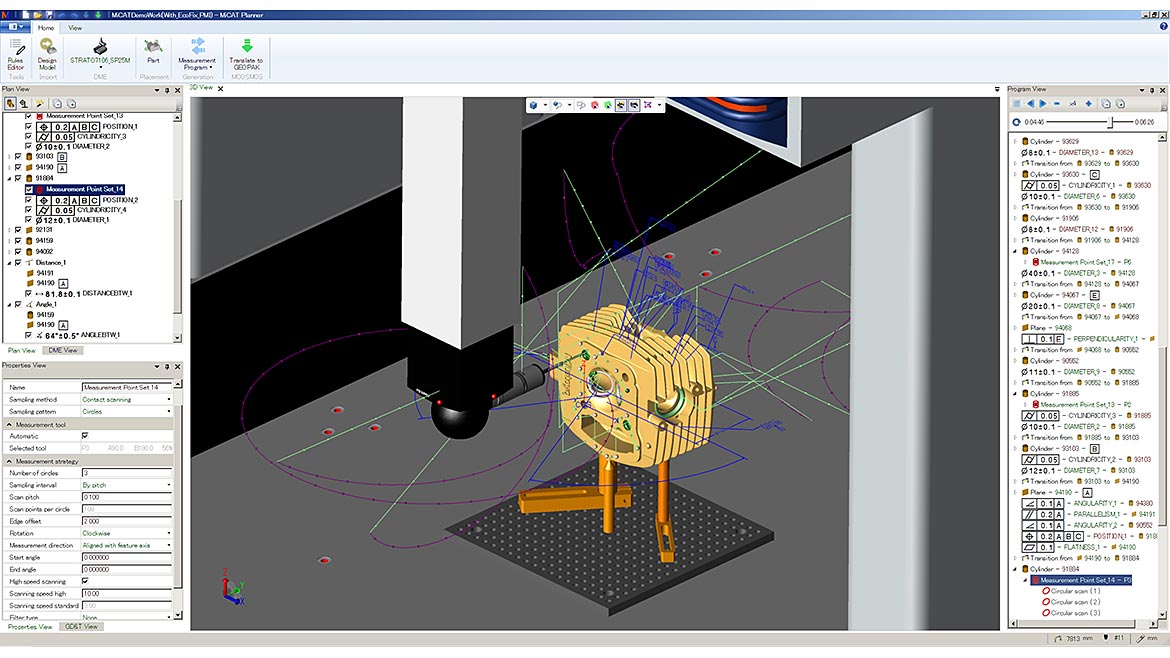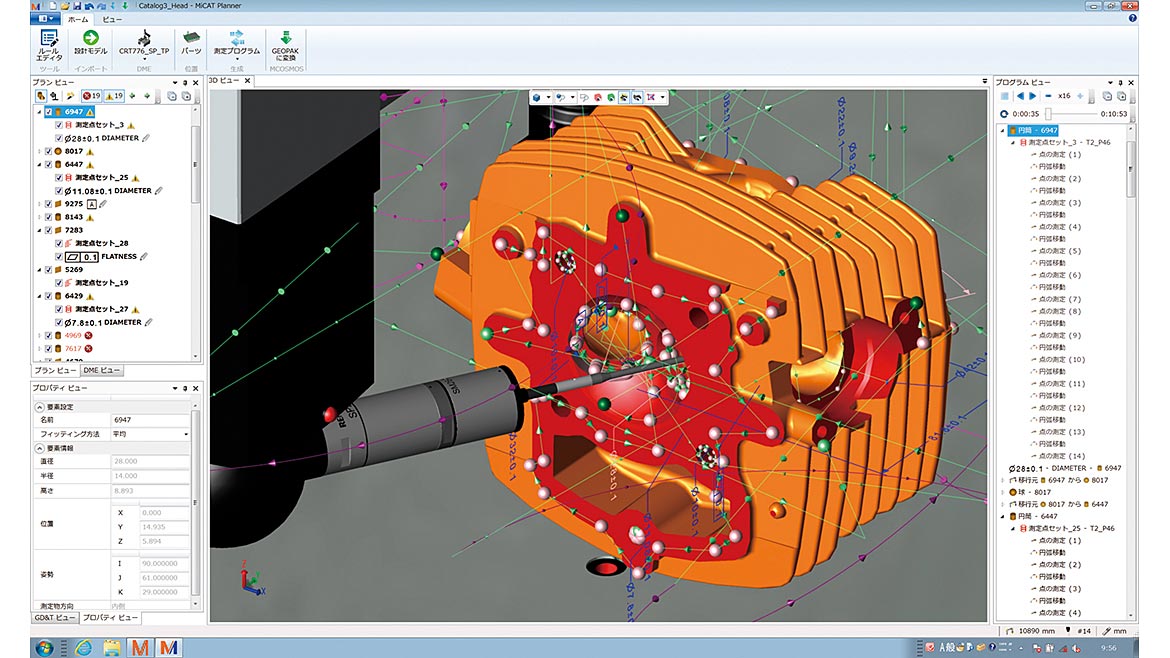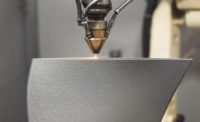Improving and reducing the product development cycle is a critical goal for every manufacturer and machine shop. Getting products out the door quicker, and with less waste, can have significant impacts on both customer service and the bottom line. However, with businesses facing numerous challenges lately – chief among them being a prolonged labor shortage – achieving that goal has become more difficult.
That’s where advanced quality inspection software (QIS) comes in. By automating many of the processes surrounding the creation of inspection programs, QIS has the potential to free workers to focus on other, more important tasks, dramatically cut down on human error, and speed up development time, among other benefits.
But despite the advantages that QIS offers, adoption of it is lagging. While the more advanced QIS software platforms can be a significant investment, both in terms of capital and training, businesses would be wise to consider implementing them.
The Evolution Of QIS
At its simplest level, QIS is any software program that assists in gathering measurement data. Although there are basic-level programs that closely mirror spreadsheets, the hot trend in the industry are the more advanced platforms that automate many of the inspection processes and closely integrate with coordinate measuring machines (CMMs).
Today’s advanced QIS platforms are all about compatibility and interoperability. Regardless of what kind of CMM hardware you’re working with – whether scanners, arm-based, optical or something else entirely – today’s cutting-edge QIS platforms will have no trouble seamlessly integrating with them. They also connect easily to your CAD software.
However, more than that, they allow you to save time and resources, and maximize efficiency. By automating the CAD-based CMM programming process, advanced QIS platforms can generate an entire measurement program in a few clicks. They also allow you to set, store and select rules, characteristics, features or measurement points to include, reducing the element of human error.
When relying on manual processes – or even worse, hand-written notes – for coordinate measurements, human error will always be a reality. Sometimes, measurements are incorrectly read, incorrectly entered, or the handwriting is illegible. Regardless, the result is the same: costly errors that waste time, materials, and money. QIS can eliminate that by taking the human element out of the equation.
It can also drastically reduce the time it takes to generate and process inspection plans. When done manually, it can take hours, or even days for more complex parts, to create inspection programs. Allowing quality inspection software to do the heavy lifting cuts that time significantly. It also has the added benefit of freeing programmers to focus on other tasks. With many manufacturers and shops facing labor challenges, and the industry in general facing a lack of skilled programmers, the value of QIS cannot be understated.
Streamlining the process – and making it less error-prone – also cuts down on scrap, which wastes material and dollars.

CAD-based CMM software automates the parts programming process to drastically reduce programming efforts and time.
QIS, PMI, And Standardization
Product manufacturing information, or PMI, obviously is not a new concept in the industry. And being able to annotate additional attributes and information into a 3D model – such as materials, dimensions, tolerances, and surface finish, among others – is tremendously valuable.
But the real value comes with being able to utilize semantically referenced PMI, or semantic PMI. This makes those annotations and characteristics machine readable, and tying them to your QIS further automates and streamlines the product creation and inspection process. It also helps further reduce the human error element by integrating an unofficial form of standardization into the process. Since the annotated attributes and information are able to be interpreted and read by the software, you don’t have to rely on someone manually keying it in, eliminating a potential path for errors.
Additionally, by delegating that process to the machine, it ensures that the same frame of reference and interpretation is used at all times by allowing you to create rules for things like tolerance interpretation. If two different people work on the same part, they may – and often do – have different ways of interpreting data, or different tolerance thresholds. For example, when measuring a circle, one person might think that using five points is best, while another uses three. Setting rules in the QIS eliminates the potential variations in results.
What The Future Holds For QIS
The future for advanced QIS programs is incredibly bright. Over the next five to 10 years, we expect to see even greater automation as the software becomes more integrated with coordinate measuring machines (CMMs). We also expect to see the introduction of overarching, “master” software that can control and coordinate all the different machines, software platforms, and modules at a manufacturer or machine shop. Not only will this help to further reduce human error, it can also enhance productivity and efficiency.
On a related note, QIS will also expand so that it can be used in conjunction with all types of measurement systems and sensors – from vision measurement and contour machines, to roundness machines, hardness testers and more.
Data traceability will also become much easier and more streamlined. Today, data sets are often siloed or tied to their own separate platforms and systems, so compiling it all into one common format can be a labor-intensive process. Future QIS iterations will be able to compile all those datasets into a centralized, easily accessible database.
Similarly, future generations of QIS will better integrate with CAD software to enable a seamless workflow. By fully defining all of the characteristics in a machine-readable format – instead of requiring alternative design steps – that information can be simultaneously passed to both the machine tool software and the inspection program generating software. This allows for traceability from materials and cutting tools to inspection tools and results to all be easily accessible and shareable.
As QIS continues to evolve and develop, we also see it greatly reducing the reliance on paper throughout the design-build process, from modeling, to revising and especially archiving. This particular benefit might be especially underrated. Who hasn’t had to spend hours digging through old paper files to find an archived schematic, or following a paper trail of design revisions, only to find that a record was lost or misplaced? What happens if paper records are destroyed or damaged in a fire or other type of accident?
With the digital records advanced QIS creates and stores, those worries and frustrations are a thing of the past. As an added benefit – moving from paper to digital records cuts down on the physical footprint needed to maintain them.

Tolerance information from a 3D CAD model automatically determines which features of the part should be measured to verify conformance to specification, all but eliminating human error.
Adoption Is Lagging
Despite the benefits and advantages that QIS offers, adoption has lagged. While some bigger manufacturers have implemented it, many smaller machine shops and businesses have not. Which begs the question: why?
The easiest answer is financial. The more advanced QIS platforms do require a significant amount of capital. Despite the benefits, that investment may be a hard sell. Additionally, some businesses may not have the internal expertise to utilize the software. When faced with the prospect of devoting a significant amount of time to train workers on the platform in the middle of a challenging labor shortage, those companies simply prefer to maintain the status quo.
Another reason is that advanced QIS programs require a paradigm shift in terms of thinking and operations, and the manufacturing industry at large can often be slow and resistant to change, especially when it comes to well-established processes that have worked for years or decades.
Change Is Coming
But the reality is that as newer industries grow and more players enter the market, QIS will go from a “nice-to-have” to a “must-have.” The electric vehicle (EV) industry is rapidly expanding, with new carmakers entering the space, and established manufacturers shifting operations to incorporate more electric models. These require new parts and components with complex designs and materials. Similarly, manufacturers in the aerospace and defense industries will not only utilize this software themselves, but demand that their suppliers do so as well.
And shortening the time to market helps get products in customers’ hands faster, which is always a good thing. Advanced QIS programs will become mandatory, from a competitive standpoint. If your business isn’t using one yet, now might be a good time to start.






